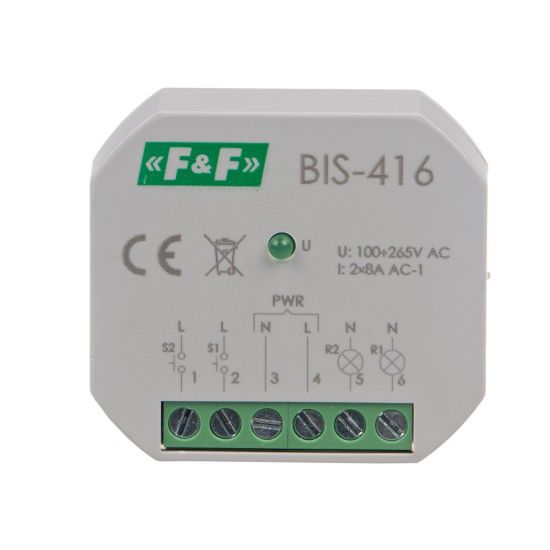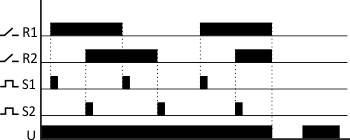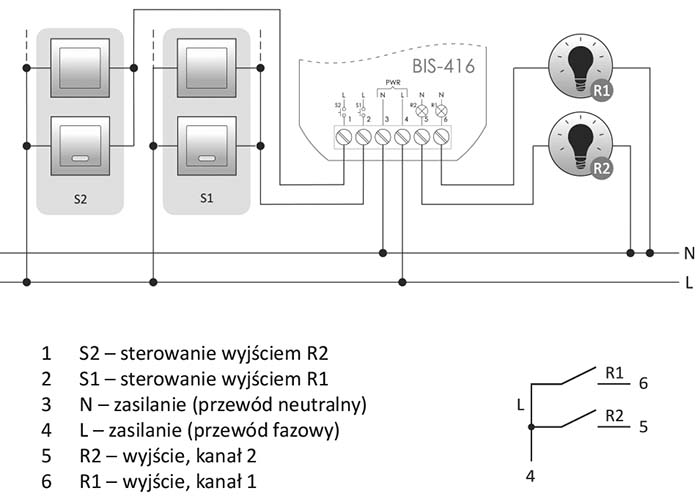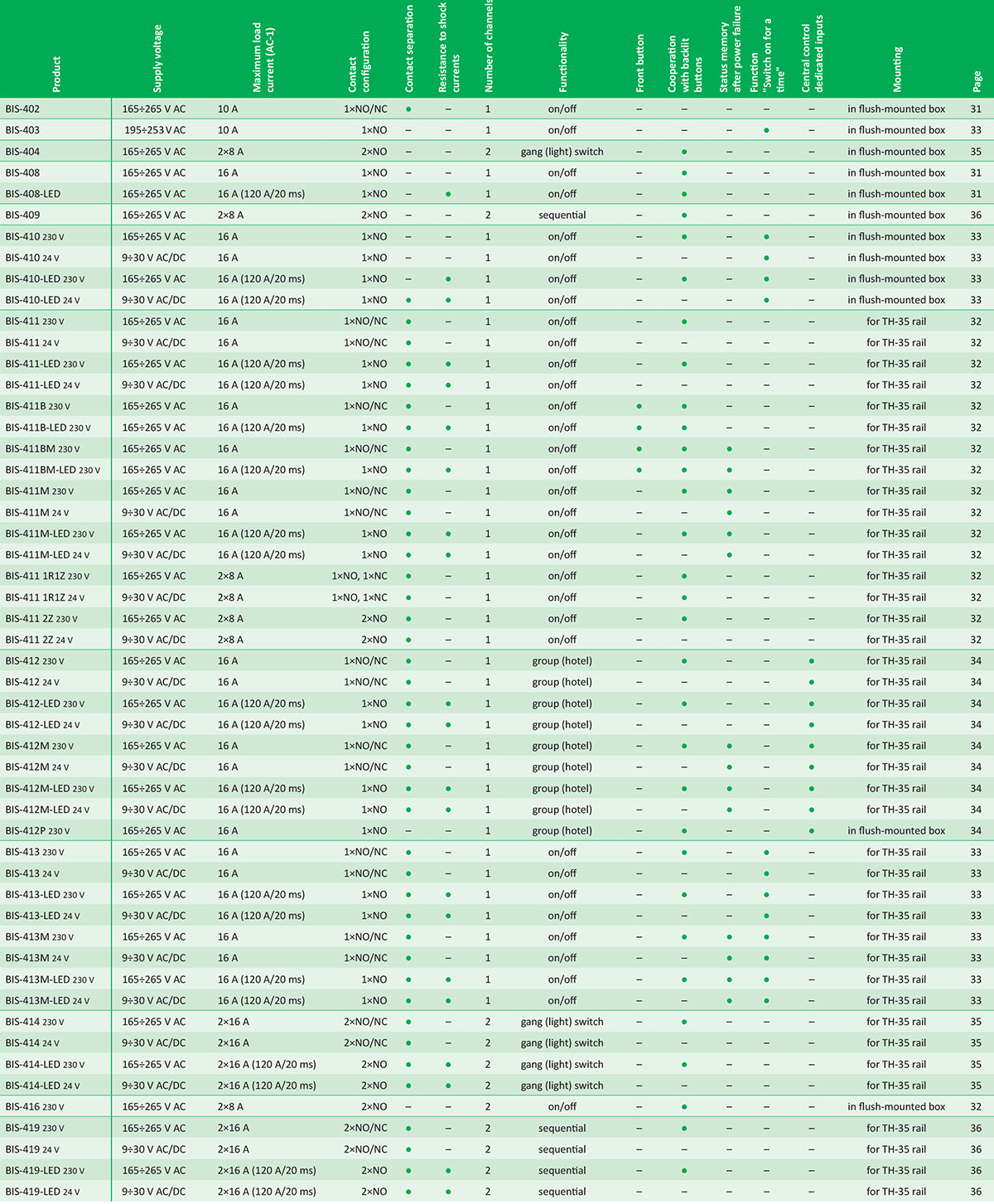






Operation
The relay is activated with a current pulse caused by the press of any momentary (bell) button connected to the relay. Subsequent pulse will switch the relay off.
The relay has two independently controlled channels.
Control is carried out by means of two separate signal inputs. Pulse on S1 input controls the R1 output. S2 input and R2 output operate on the same basis.
The relay does not have a "memory" of the contact position, i.e. when power returns after power failure, contact of the relay will be set in the disabled state. This prevents automatic switching of controlled receivers without supervision after prolonged power outage.

NOTE!
BIS-416 is compatible with backlit buttons. ![]()
Power table

The above data are indicative and will heavily depend on the design of a specific receiver (that is especially important for LED bulbs, energy-saving lamps, electronic transformers and pulse power supply units), switching frequency and operating conditions.

